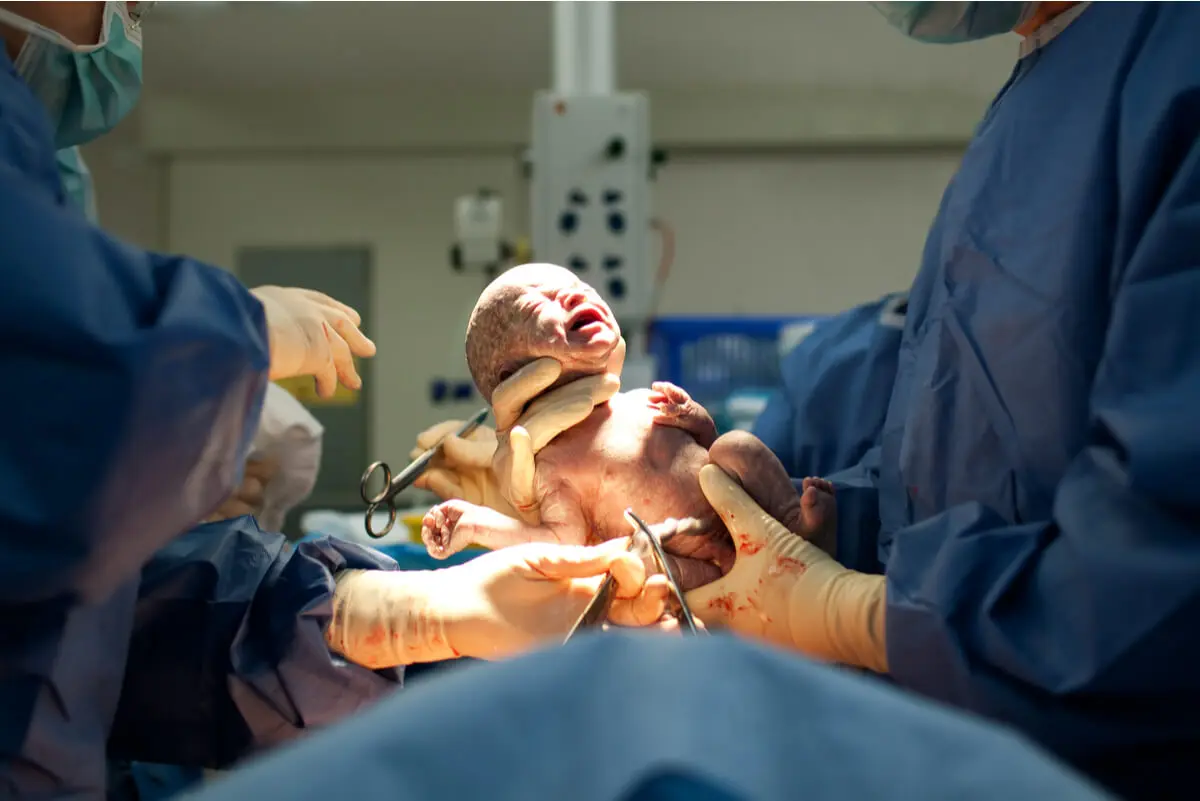Supine Hypotension Syndrome: What Is It and How to Prevent It?


Reviewed and approved by the doctor Leonardo Biolatto
During pregnancy, a woman’s body goes through different changes that allow it to adapt in order for the baby to develop inside her. However, these changes increase the probability of suffering certain pathologies, such as supine hypotension syndrome.
The cardiovascular system is one of the systems that undergoes the most changes during this stage. Studies show that cardiac output increases by up to 40%, blood pressure decreases, and changes in position affect venous return.
The changes described in the cardiovascular system cause many women to suffer from supine hypotension syndrome. Fortunately, there are ways to prevent its onset, even from the first trimester of pregnancy.
What is supine hypotension syndrome?
Also called supine hypertensive syndrome and aortocaval compression syndrome, this is a condition in which the blood pressure of pregnant women drops below normal levels when they lie on their backs. This phenomenon occurs because the uterus presses on the inferior vena cava and the aortic artery, which decreases venous return and thus blood pressure.
The drop in blood pressure must be between 15 and 30 millimeters of mercury (mm Hg) to be considered supine hypotension syndrome. The disorder is much more common after the second trimester, and up to 15% of full-term pregnant women suffer from it.
Not all pregnant women will have the syndrome. Some women have better coping mechanisms that prevent the drop in blood pressure. One of the compensatory changes is increased collateral venous flow.
You’re sure to be interested in Possible Psychological and Emotional Changes in Pregnancy
Symptoms
Symptoms of supine hypotension syndrome usually appear within 3 to 10 minutes after the pregnant woman lies on her back, according to research. However, they disappear again when changing position. They usually disappear when the woman lies on her side.
The main clinical manifestation of this condition is hypotension. This drop in blood pressure will decrease cardiac output, as well as oxygen delivery to different organs.
The decrease in oxygen may result in the following symptoms:
- Weakness
- Headaches
- Skin pallor
- Dizziness and nausea
- Profuse sweating
- Shortness of breath
- Bradycardia or slowing of the heart rate
In severe cases, women may lose consciousness. It is, therefore, essential to identify the symptoms early and change position as soon as possible.

Causes and risk factors
The main cause of supine hypotension syndrome is the failure of collateral venous outflow to develop. However, these are changes that no woman can control, so all women can easily develop the disorder during gestation.
There are certain risk factors that increase the likelihood of having the syndrome. One of the most important is related to the size, shape, and weight of the uterus, as larger and heavier uteruses will generate greater compression.
Other risk factors include the following:
- More than 20 weeks of pregnancy
- Excess amniotic fluid
- Excess weight or obesity
- Multiple pregnancies
Discover more: Amniotic Fluid Problems: All You Should Know
Treatment of supine hypotension syndrome
The best possible treatment for supine hypotension syndrome is to change the position you’re in. When symptoms develop, it is best to lie on the left side. This position will prevent compression of the vena cava and improve blood flow.
Lying on the right side may also work, however, the liver will hinder the change in position of the uterus, so relief may take a little longer. Medications are not necessary to treat the condition, but it’s always best to seek the attention of a gynecologist in case of persistent symptoms.
The syndrome in question may also appear during labor. Healthcare providers should take appropriate measures to prevent the symptoms from worsening. Ideally, oxygen should be provided and the head elevated, although an emergency cesarean section may also be the solution.

Can it be prevented?
Fortunately, there are ways to prevent supine hypotension syndrome and its complications. One of the most useful measures is, as we’ve already mentioned, to avoid lying on the back.
It’s best for women to lie on their left side from the second trimester onwards.
The position of the legs won’t have a great influence, so they can be flexed or extended, depending on whatever feels most comfortable. It’s also recommended to change sides from time to time to avoid discomfort in the extremities.
Another tip when sleeping is to raise your head a little above the level of your feet, thus increasing venous return. Although yoga in pregnancy brings great benefits, some postures should be avoided.
Most of the measures that help women to relax and fall asleep also reduce the likelihood of suffering from supine hypotension syndrome. Therefore, the following are recommended:
- Drinking a glass of water or milk before bedtime.
- Using several pillows or a breastfeeding cushion when sleeping on your side.
- Placing a wedge under the hip to give some inclination.
A very common syndrome that can be prevented
Supine hypotension syndrome is a common pathology, suffered by millions of women during pregnancy. Although it can have serious consequences, it’s very easy to prevent. All you need to do is avoid lying on your back for long periods of time.
However, if the symptoms are very frequent and intense, the best thing to do is to consult your gynecologist. There are other causes that may explain the drop in blood pressure, which should be treated as soon as possible.
All cited sources were thoroughly reviewed by our team to ensure their quality, reliability, currency, and validity. The bibliography of this article was considered reliable and of academic or scientific accuracy.
- De-Giorgio F, Grassi VM, Vetrugno G, d’Aloja E et al. Supine hypotensive syndrome as the probable cause of both maternal and fetal death. J Forensic Sci. 2012 Nov;57(6):1646-9.
- Humphries A, Mirjalili SA, Tarr GP, Thompson JMD et al. Hemodynamic changes in women with symptoms of supine hypotensive syndrome. Acta Obstet Gynecol Scand. 2020 May;99(5):631-636.
- Kim DR, Wang E. Prevention of supine hypotensive syndrome in pregnant women treated with transcranial magnetic stimulation. Psychiatry Res. 2014 Aug 15;218(1-2):247-8.
- Massoth C, Chappell D, Kranke P, Wenk M. Supine hypotensive syndrome of pregnancy: A review of current knowledge. Eur J Anaesthesiol. 2022 Mar 1;39(3):236-243.
- Sherman C, Gauthier M, David M. Supine Hypotensive Syndrome of Pregnancy. En:Freeman BS, Berger JS. Eds. Anesthesiology Core Review: Part Two Advanced Exam. McGraw Hill; 2016.
This text is provided for informational purposes only and does not replace consultation with a professional. If in doubt, consult your specialist.








